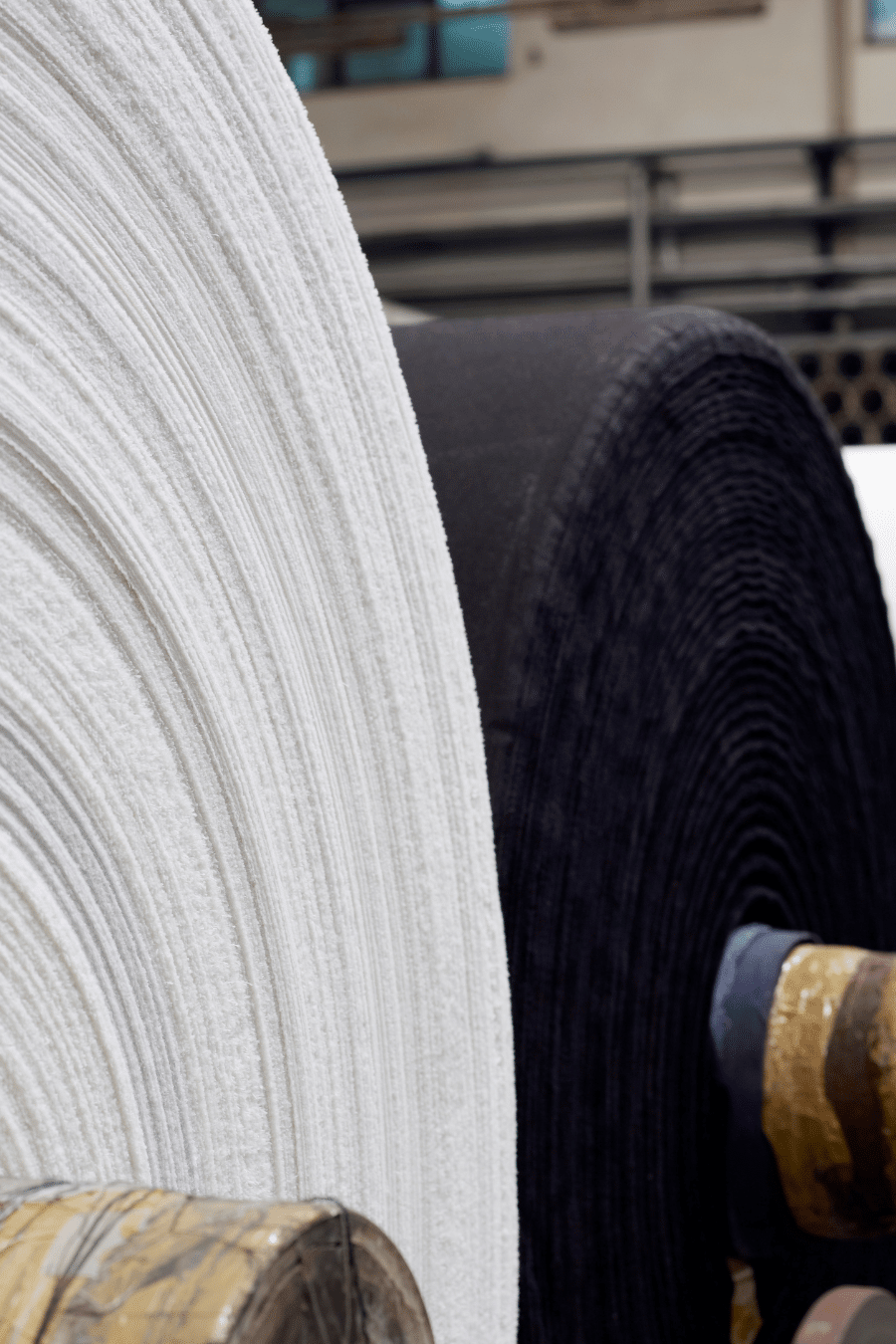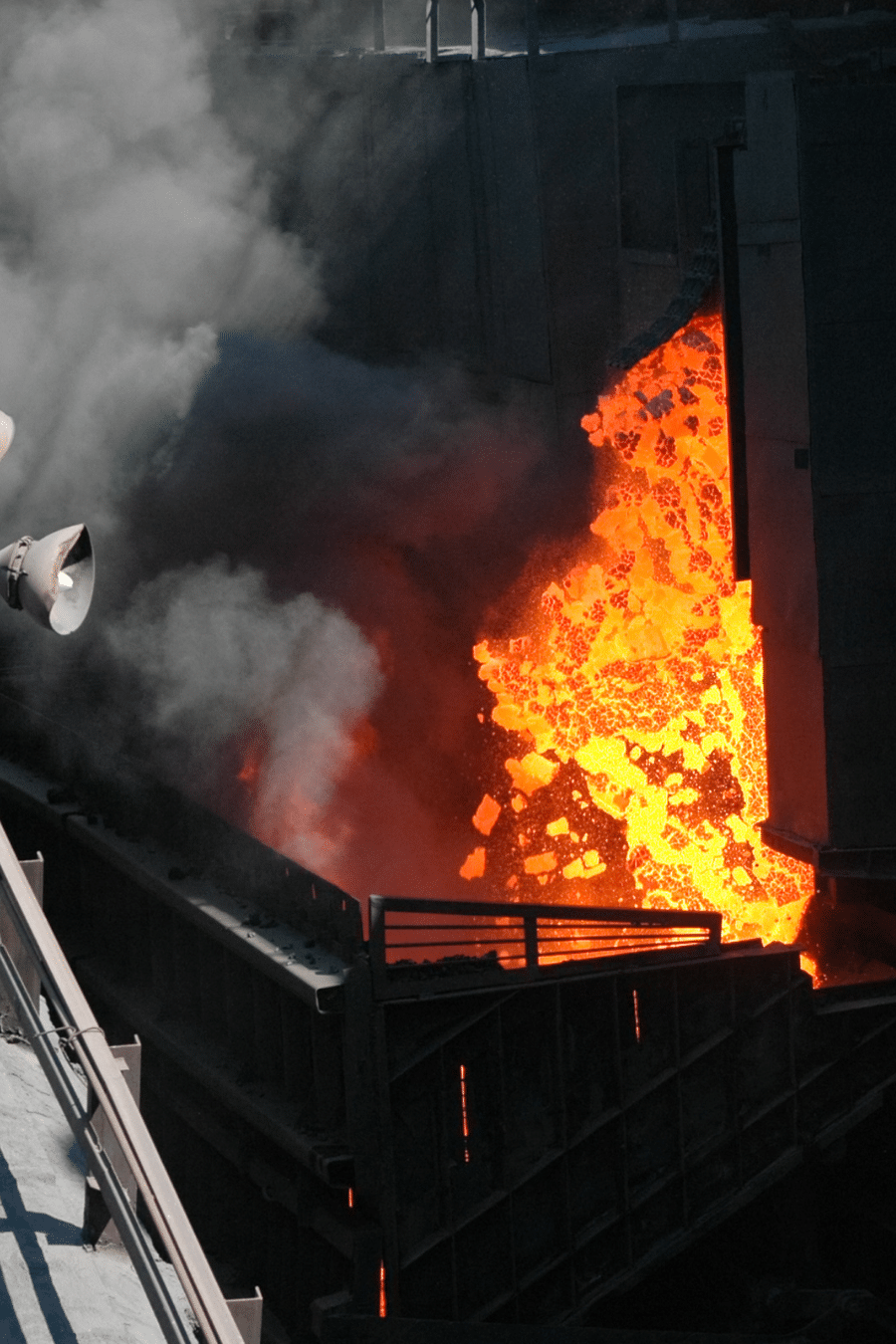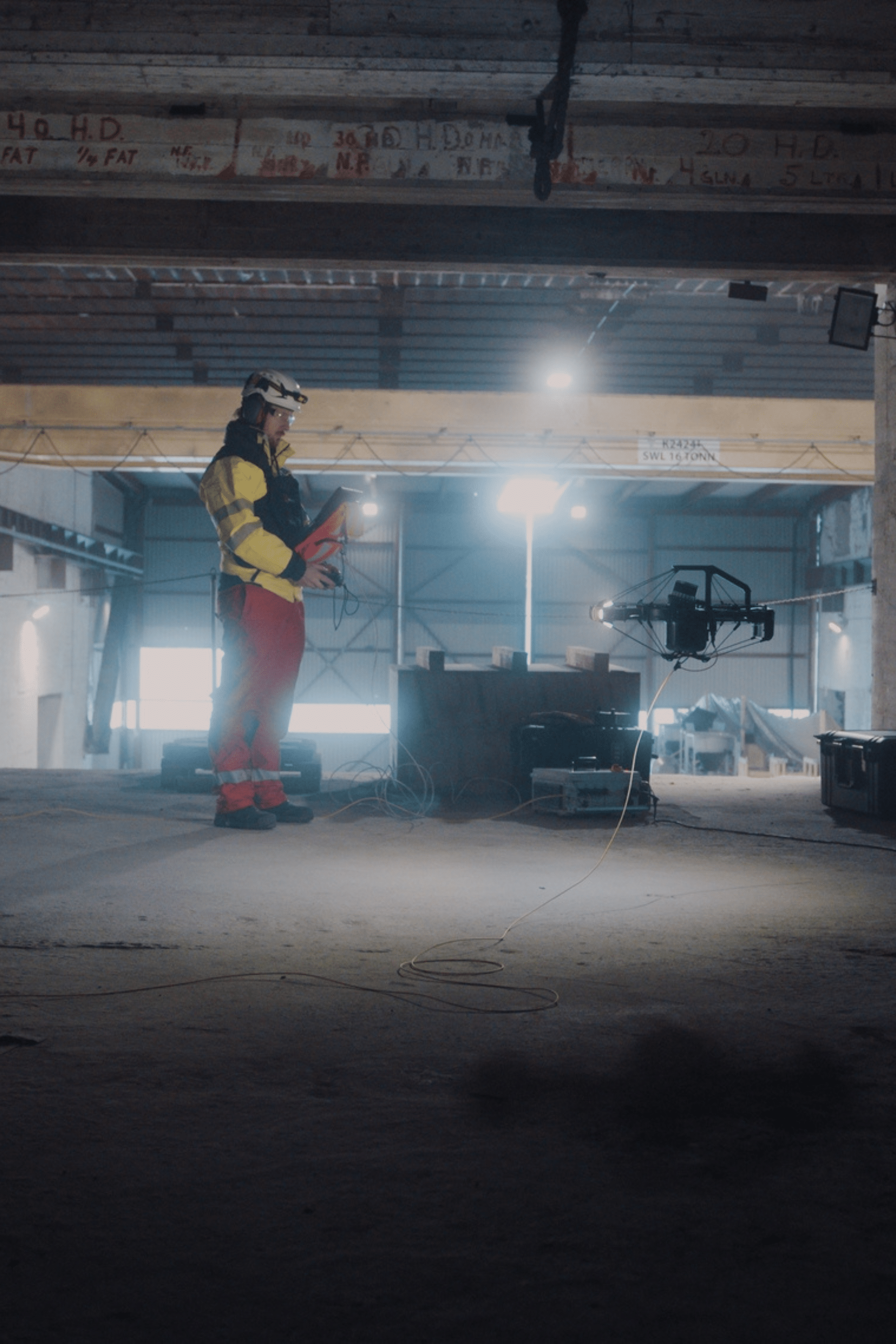Introduction
In the tissues industry, particularly in weaving mills, spinning factories, and textile finishing plants, production generates a significant amount of airborne dust, fibers, and textile particles. These residues gradually accumulate on beams, ventilation ducts, lighting fixtures, and production machinery.
+15CM
of dust accumulated each year
10 DAYS
of annual cleaning-related downtime.
+5000
industrial fires reported each year
Dust Accumulation
A Hidden Threat in Tissues Industry
1. Decreased Production Output
Air pollution and the accumulation of residues in tissues factories have a direct impact on the quality of the fabrics produced. Due to the presence of airborne particles such as fibers, dust, and other impurities, tissues in the manufacturing process are exposed to a risk of contamination throughout production.
When these particles settle on fibers or fabric rolls, they can affect their appearance, texture, and cleanliness. This contamination may result in visible defects such as stains, irregular weaving, or color variations, compromising the uniformity and overall quality of the final product. For fabrics intended for high-end or technical applications, these alterations can render the materials non-compliant with customer requirements and industry regulations.
2. Air Quality Deterioration
The excessive presence of tissues dust in the ambient air poses a significant health risk within textile production facilities. These fine particles, generated during the processing of both natural and synthetic fibers, remain suspended in the atmosphere and are inhaled daily by workers, thereby increasing the health hazards they face.
Prolonged exposure to these residues can lead to various respiratory issues, such as asthma, chronic bronchitis, or lung infections, particularly in the most vulnerable workers. Textile dust can also cause skin irritations and allergic reactions, manifesting as redness, itching, or inflammation of the airways.
3.Elevated Risk of Fire and Explosion
A gradual buildup of tissues fibers presents several critical safety risks for your facilities. Specifically, the high concentration of tissues particles in the air becomes a major fire hazard. Whether natural or synthetic, textile fibers are highly flammable and can easily catch fire when exposed to a heat source, spark, or even simple friction. This can lead to rapid, uncontrolled combustion, spreading the fire throughout production areas and significantly increasing the danger to both your employees and equipment.
This risk is even greater in environments where ventilation or air conditioning systems might spread these flammable particles through the air, further increasing the chances of a fire starting. Therefore, it’s crucial to maintain a clean and safe working environment by taking effective preventive measures to limit the accumulation of these dust particles.
4. Increased Operational Maintenance Costs
The buildup of dust and textile fibers on equipment can have serious consequences on the operation of machinery in a tissues factory. When these residues accumulate on machine components (such as motors, filters, belts, or ventilation systems), they can cause blockages, overheating, and even mechanical failures.
As a result, this can lead to an increase in unplanned maintenance interventions and a reduction in the lifespan of the machines.
SITE DIRECTOR
Spinning Factories – France
“The accumulation of dust in our factory is an issue we had never truly addressed, due to the complexity of the operations involved. Technical and organizational constraints made it difficult to implement an effective solution. However, this neglect has led to significant downtime, and we even narrowly avoided a fire due to deposits on hot areas. It has now become crucial to establish a regular and safe cleaning solution to maintain safety, production continuity, and compliance with internal standards.”
Revolutionize
Industrial Cleaning with Zeeef
To address these challenges, regular and thorough cleaning of the facilities is crucial to maintain a healthy work environment, optimize equipment performance, and ensure production meets the highest quality standards. Zeeef offers a complete and secure industrial cleaning solution with Scout DI 137 drone & ZF1 Blower Payload.
1. Reliable and Secure Services
Scout DI 137 drone & ZF1 Blower Payload is transforming industrial cleaning operations by providing a fast, efficient, and safe solution. By eliminating the need for scaffolding or lifts, this innovative tool removes logistical challenges and significantly reduces risks associated with working at height, such as falls, falling objects, or handling accidents.
With its agility and precision, the Scout DI 137 drone & ZF1 Blower Payload can easily reach even the most difficult areas, including high structures, ventilation ducts, and metal beams. Its ability to operate in confined or cluttered spaces ensures a thorough and precise cleaning, all while minimizing risks.
2. Fast & On-Schedule Services
Scout DI 137 drone & ZF1 Blower Payload streamlines cleaning operations by reducing the need for manual interventions, which are often time-consuming and costly. With its speed and efficiency, our industrial dusting drone minimizes production downtime by performing cleaning tasks without the need to dismantle equipment or undergo lengthy logistical setups.
By limiting the use of scaffolding, lifts, and other heavy equipment, this technology reduces costs associated with rentals, labor, and maintenance. Additionally, by enabling more frequent and effective cleaning, it helps extend the lifespan of machines and prevents unexpected breakdowns, thereby lowering corrective maintenance expenses.
This optimized approach enhances productivity, reduces operational costs, and ensures a quick return on investment, making the Scout DI 137 drone and ZF1 blower payload an innovative and cost-effective solution for industrial operations.
3. Efficient Services with
Detailed Performance Reports
The Scout DI 137 drone and the ZF1 blower payload are designed to provide optimal dust removal and residue elimination through advanced, patented blower technology developed in 2017. This blower system, created by Zeeef, efficiently removes all types of textile dust, even the finest and most stubborn particles.
Using the Scout DI 137 drone & ZF1 Blower Payload ensures uniform coverage, removing dust evenly across large surfaces, including high, confined, or hard-to-reach areas. Its ability to move with precision and speed guarantees services of unmatched efficiency.
All services are documented in precise reports, providing clear insights into the effectiveness of each cleaning operation. This ensures transparency, allows performance tracking, and supports data-driven decisions for continuous improvement.
4.Online Platform for Real-Time Service Monitoring and Data Analysis
The Scout Portal online platform, designed for the Scout DI 137 drone, is an advanced solution that enables the analysis, storage, and backup of data from dust removal operations. This platform provides centralized access to the information collected by the Scout DI 137 drone, making it easier to manage data in real time and securely store it for future use.
The portal integrates SLAM (Simultaneous Localization and Mapping) technology, allowing the drone to create detailed 3D models of the serviced site. It generates a 3D point cloud that offers an accurate representation of the cleaned areas, while also highlighting other key points of interest such as structural defects or potential industry-specific risks.
The platform also streamlines the creation of detailed reports, ensuring continuous tracking of the services performed and their effectiveness.







